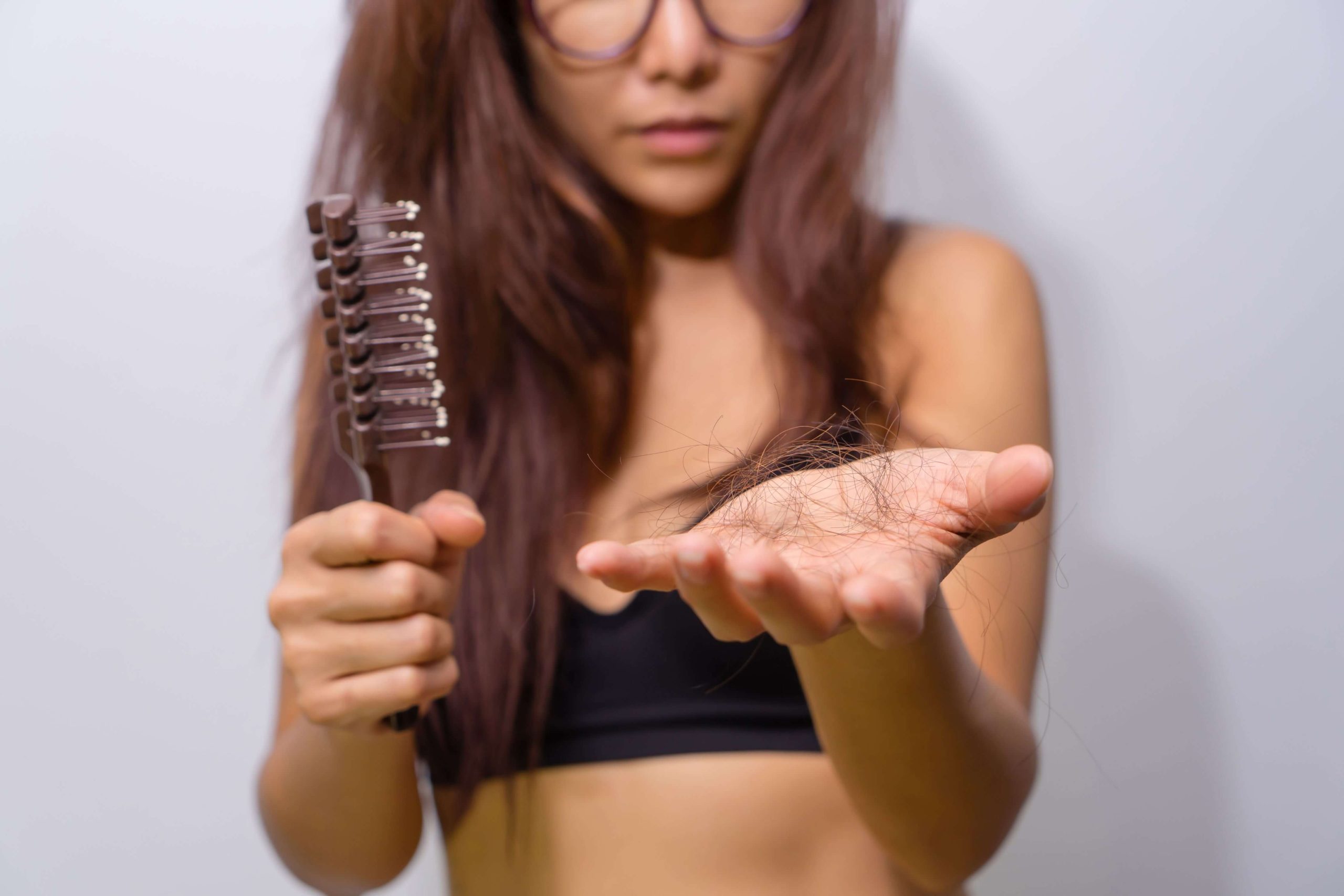Iron Deficiency and Hair Loss: Causes, Symptoms, and Treatments
Iron deficiency is one of the most common causes of hair loss, particularly in women. If you’ve noticed thinning hair or excessive shedding, it could be a sign that your body is lacking sufficient iron. Let’s explore the connection between iron deficiency and hair loss, how to recognize the symptoms, and what you can do to restore both your hair and your health.

What Is Iron Deficiency?
Iron is a vital mineral that plays a key role in producing hemoglobin, a protein in red blood cells that carries oxygen to your body’s tissues. When your body lacks iron, your cells—including hair follicles—struggle to get enough oxygen, which can impact their ability to function properly. This can lead to weakened hair strands and, eventually, hair loss.
How Iron Deficiency Causes Hair Loss
Hair follicles are among the fastest-growing tissues in the body, and they require a steady supply of nutrients—like iron—to sustain healthy growth. When iron levels drop, your body prioritizes essential organs like your heart and brain, leaving hair follicles with insufficient resources. This results in:
- Telogen Effluvium (TE): A condition where more hairs enter the resting phase of the hair cycle, causing noticeable shedding.
- Reduced Hair Growth: Iron deficiency slows down hair regrowth, leaving thinning areas more apparent.
Symptoms of Iron Deficiency Hair Loss
Recognizing iron deficiency and its impact on your hair is crucial for timely intervention. Symptoms include:
- Increased Shedding: More hair than usual falling out during washing or brushing.
- Thinning Hair: Hair may appear finer, particularly at the crown or hairline.
- Brittle Texture: Hair becomes dry, brittle, or prone to breakage.
- Other Signs of Iron Deficiency: Fatigue, pale skin, shortness of breath, and dizziness.
Who Is at Risk?
Certain groups are more likely to experience iron deficiency, including:
- Women: Due to menstruation and pregnancy, women are at a higher risk of losing iron.
- Vegetarians/Vegans: Plant-based diets can lack easily absorbable iron.
- Athletes: Intense exercise can deplete iron levels.
- Individuals with Chronic Conditions: Disorders like celiac disease or inflammatory bowel disease can impair iron absorption.
How to Diagnose Iron Deficiency Hair Loss
If you suspect that iron deficiency is causing your hair loss, consult a healthcare professional. They may perform the following tests:
- Blood Tests: Check ferritin (iron storage) and hemoglobin levels.
- Scalp Examination: Rule out other causes of hair loss, such as androgenic alopecia or fungal infections.
Treating Iron Deficiency Hair Loss
The good news is that treating iron deficiency can often reverse hair loss. Here’s how to tackle it:
1. Diet Adjustments
Incorporate iron-rich foods into your meals, including:
- Heme Iron: Found in animal products like red meat, poultry, and fish.
- Non-Heme Iron: Found in plant-based sources like spinach, lentils, and fortified cereals.
Pair non-heme iron with vitamin C-rich foods (e.g., oranges, bell peppers) to boost absorption.
2. Iron Supplements
If your iron levels are severely low, your doctor may recommend supplements. Take these as prescribed, as excessive iron can be harmful.
3. Hair Care During Recovery
While waiting for your iron levels to stabilize, you can protect and enhance your hair with:
- Gentle Shampoos: Look for sulfate-free options.
- Hair Masks: Use nourishing treatments to strengthen brittle strands.
- Avoiding Heat Tools: Minimize damage to already fragile hair.
4. Lifestyle Changes
- Get enough sleep and reduce stress, as these factors also impact hair health.
- Avoid over-exercising, which can further deplete iron levels.
How Long Does It Take for Hair to Recover?
Hair growth is a slow process. After correcting iron deficiency, you may notice reduced shedding within 2-3 months, but full regrowth can take up to a year, depending on the severity of the deficiency.
Preventing Future Hair Loss from Iron Deficiency
- Maintain a balanced diet with sufficient iron and other essential nutrients.
- Monitor iron levels regularly, especially if you’re in a high-risk group.
- Stay hydrated and avoid excessive caffeine intake, as it can interfere with iron absorption.
When to See a Specialist
If your hair loss persists despite improving your iron levels, consult a dermatologist or trichologist. They can identify other potential causes and recommend advanced treatments like PRP therapy or low-level laser therapy.
Conclusion
Iron deficiency hair loss is a common but reversible condition. By addressing the root cause through proper nutrition, supplements, and professional guidance, you can restore your hair’s health and vitality. If you’re struggling with hair loss, remember that early intervention is key to achieving the best results.
